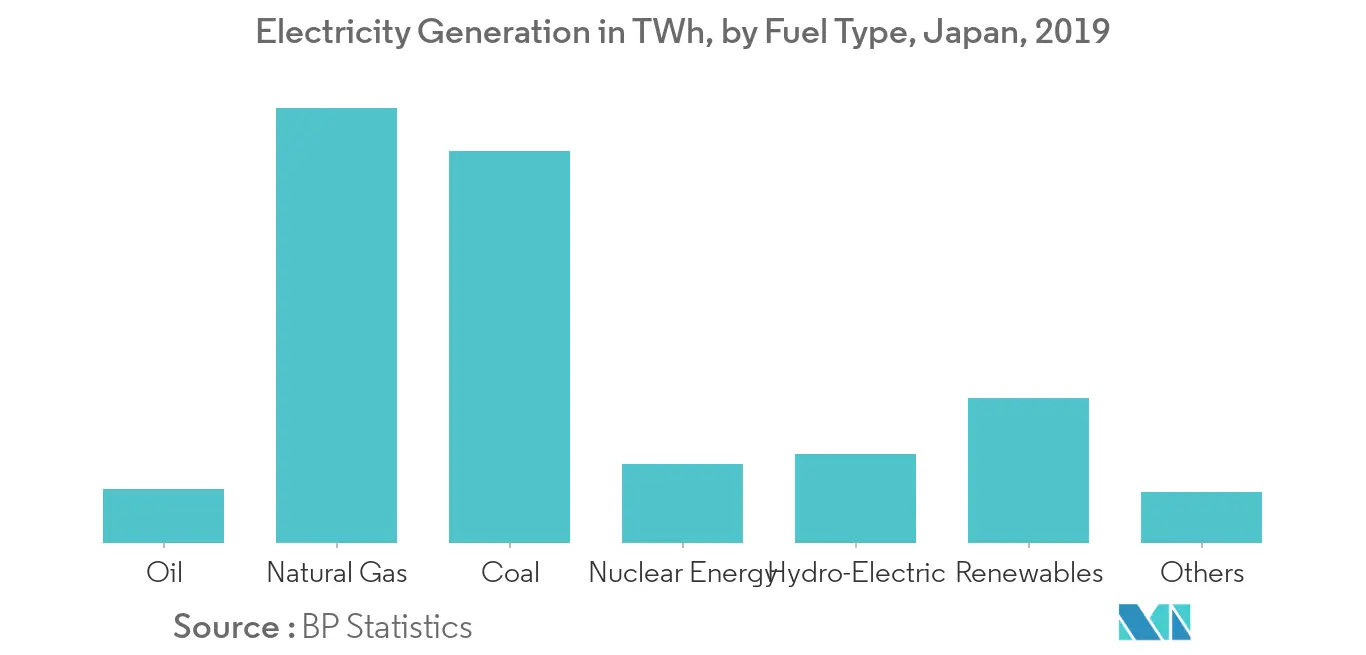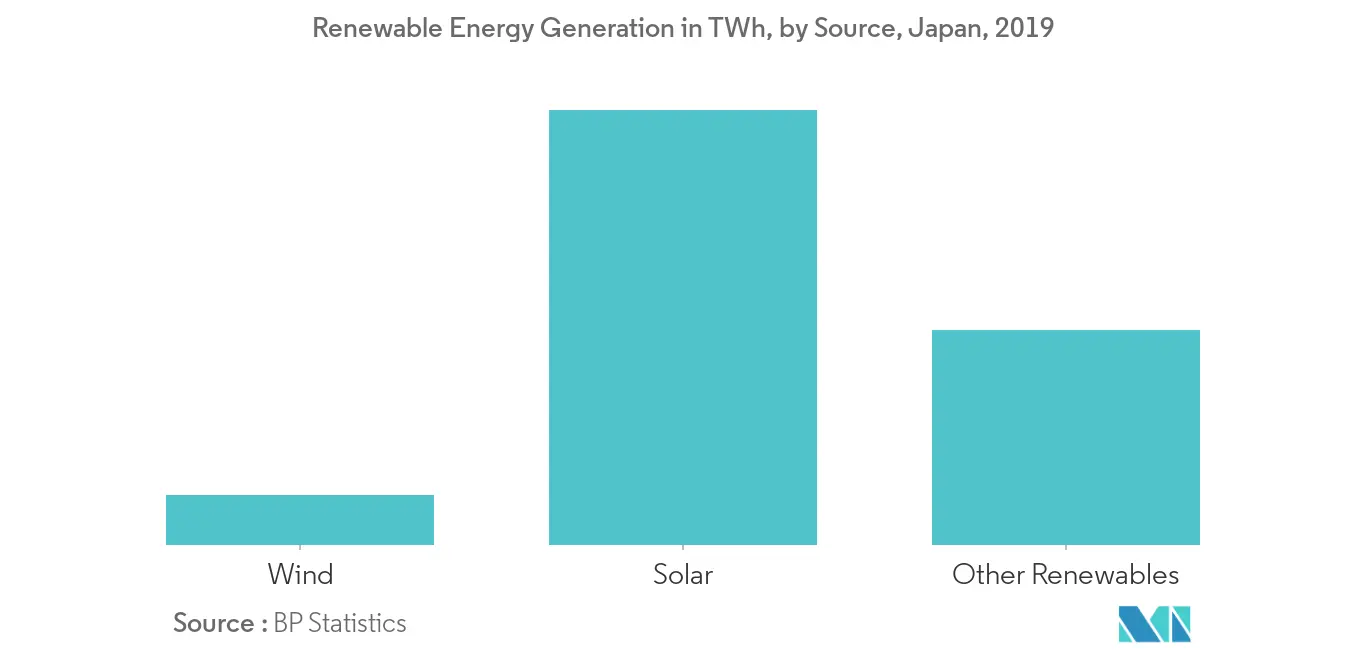Market Trends of Japan Combined Heat and Power Industry
This section covers the major market trends shaping the Japan Combined Heat & Power Market according to our research experts:
Natural Gas Based Combined Heat and Power to Witness Significant Demand
- Traditionally, natural gas has accounted for more than 70% of the fuel, for CHP. It has witnessed strong demand from the chemical sector, where CHP has huge demand. Naturally occurring gas has been the long runner in the CHP sector for years and has made a name for itself in terms of efficiency, environmental compatibility, and safety.
- Superior logistics and infrastructure, an innovative R&D ecosystem, a business-friendly environment, and highly integrated chemical production sites have resulted in significant growth for the chemical sector, in the past. This growth is anticipated to continue, in the coming years, and translate into significant demand for natural gas-based CHP plants.
- However, the demand for gas for district heating is expected to be impacted, as the government plans to have all residential buildings off-gas, by 2050. This is expected to encourage the residential sector to switch to other fuels, for new facilities.
- Natural gas, with methane as the main fuel, burns cleanly and safely, reducing maintenance and extending the life of the CHP unit. The Pro2 natural gas CHP generates heat and electricity at the same time and offers an extremely high degree of efficiency.
- Outside the Tohoku region, Japan's industrial CHP units are mostly gas-fuelled, using piped gas supplied by local city gas companies. CHP units installed in commercial buildings also use piped gas as their main fuel source.
- A wood gasifier-CHP-plant from Burkhardt went in operation at the foot of the Mount Fuji. The centre piece of the unique power plant is the wood gasifier V3.90 and the combined heat and power plant ECO 165 HG from Burkhardt. Since May 2019, eleven combined heat and power systems from Burkhardt have been in operation in Shimokawa and supplying electricity to the grid. The town is already the eighth location with Burkhardt wood gasifiers and has the largest number of systems in Japan.
- Therefore, based on the above-mentioned points, natural gas-based CHP is anticipated to witness significant demand in Japan during the forecast period.

Supportive Government Policies to Drive the Market Demand
- Government initiatives such as the Cool Earth-Energy Innovative Technology Plan, special measures law for promoting the use of new energy, and support for deployment of new and renewable energy are expected to boost the CHP market in Japan.
- In 2008, Cool Earth-Energy Innovative Technology Plan was implemented to achieve the long-term target of reducing global GHG emissions by 2050. In accordance with that, the commission selected 21 innovative technologies whose deployment should be mandatory to achieve the target. These technologies include biofuel, PV power generation, and high-performance power storage systems, among others.
- Also, special measures law for new energy use was enacted to fasten the progress of the introduction of new energy. This law also provides financial support measures for power utilities that make use of new energy, thus helps in increasing the growth of CHP market for the next few years.
- The New Energy Development Organization (NEDO) was established in October 1980 to reduce project costs and improve renewable energies. NEDO has implemented various R&D projects for wind, PV, and other renewable energies.
- In 1997, the New Energy Promotion Council (NEPC) started a program for private and public bodies that invest in new energy technologies and facilities. Some of the technologies covered under the program include PV systems, natural gas cogeneration, wind, solar heat, biomass thermal, snow and ice heat energy, fuel cell, and others. Hence, these renewable energy technologies play a pivotal role for driving the demand of CHP in the coming years.
- Therefore, based on the above-mentioned factors, it is evident that government policies are expected to drive the CHP market demand in Japan during the forecast period.

